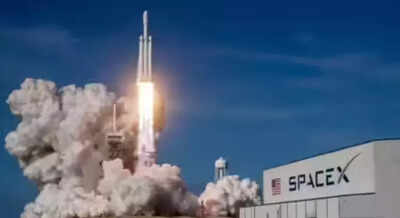ARTICLE AD BOX

In a giant leap for the Indian space industry, two
Indian startups
—
Pixxel
and
Dhruva Space
— have successfully launched satellites aboard SpaceX's Falcon 9 rocket as part of National Advanced Optical System mission from Vandenberg Space Force Base in California.Pixxel, the Bengaluru-based hyperspectral imaging company, launched three new Firefly satellites, completing the first phase of its commercial constellation. With six Fireflies now in orbit, Pixxel has established the largest Indian private-sector earth imaging satellite constellation in the world.“All 3 Fireflies successfully deployed,” Awais Ahmed, founder and CEO of Bengaluru-based Pixxel Space said in a post on X. Pixxel had launched three Firefly satellites in Jan this year. “Our earlier launches showed what was possible; this one shows what's next,” Ahmed said, adding that with six Fireflies in orbit, the planet itself becomes a living laboratory. After the launch, Pixxel posted on X, “Since liftoff, the three newest Fireflies have confirmed battery health, stabilised in orbit, locked sun-pointing, and established two-way links with full telemetry and telecommand.”The Fireflies operate in a Sun-synchronous low earth orbit, at an altitude of 550 km, enabling daily revisit capability for any location on Earth. This configuration allows Pixxel to deliver high-frequency, high-fidelity data to scientists, govts and industries worldwide.
Hyderabad-based Dhruva Space launched its LEAP-1 satellite, a hosted payload mission that builds on the company's successful qualification of on board Isro's Polar Satellite Launch Vehicle mission number PSLV-C58. LEAP-1 marks Dhruva Space's transition from capability-building to delivering impactful customer missions. The company is now scaling up its commercial payload hosting operations, enabling transformative possibilities in global space applications.



.png)
.png)
.png)
















 7 hours ago
3
7 hours ago
3








 English (US) ·
English (US) ·